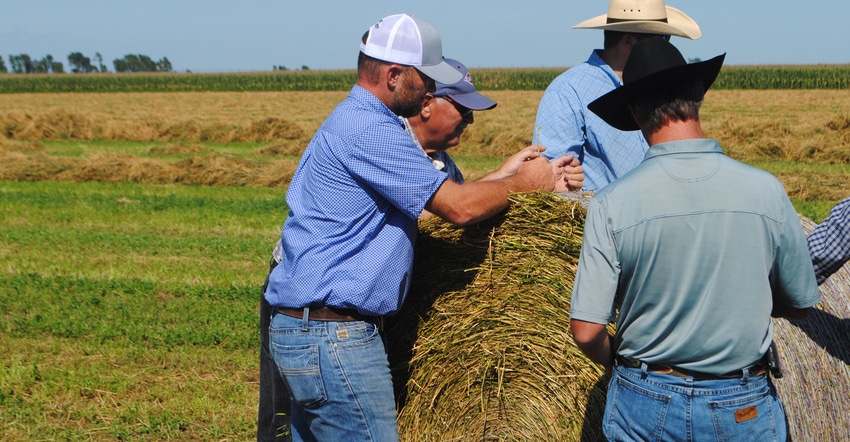February 11, 2021

Protein values in hay tests are typically reported as percent crude protein. This measures the nitrogen portion of the hay. For cattle and other ruminants, protein serves two functions.
First, protein is important for a healthy population of rumen microbes. These microorganisms aid in digesting grasses and hay that the animal alone couldn’t process. However, a consistent source of protein is needed to maintain a functioning population. Second, protein is important for animal maintenance and growth.
All animals will require some base level of protein to survive, but growing animals and animals with additional demands such as pregnancy or lactation may require even greater amounts. In some cases, when hay gets too hot, the nitrogen chemically bonds to carbohydrates and is unavailable for an animal to use effectively.
This often happens when hay is stored with moisture concentration above 20% or when fermented feeds such as silage are harvested below 65% moisture. When this happens, crude protein does not accurately represent the available protein. Often, these feedstuffs are discolored and may have a sweet or tobacco-like odor.
In these cases, adding a heat-damaged protein or insoluble crude protein test to your analysis is recommended. This will provide an adjusted crude protein content if more than 10% of the reported crude protein is unavailable for animal use and should be the basis used to form the rations.
Understanding protein in a diet may seem straightforward, but it can have a few nuances to keep in mind. Protein is critical for proper animal growth and maintenance, as well as healthy rumen function, and if you do find feed that was improperly stored, the damaged proteins need an additional heat-damaged protein test to provide true availability.
Learn more by emailing [email protected].
Beckman is a Nebraska Extension educator.
Source: UNL Forage Minute, which is solely responsible for the information provided and is wholly owned by the source. Informa Business Media and all its subsidiaries are not responsible for any of the content contained in this information asset.
You May Also Like




